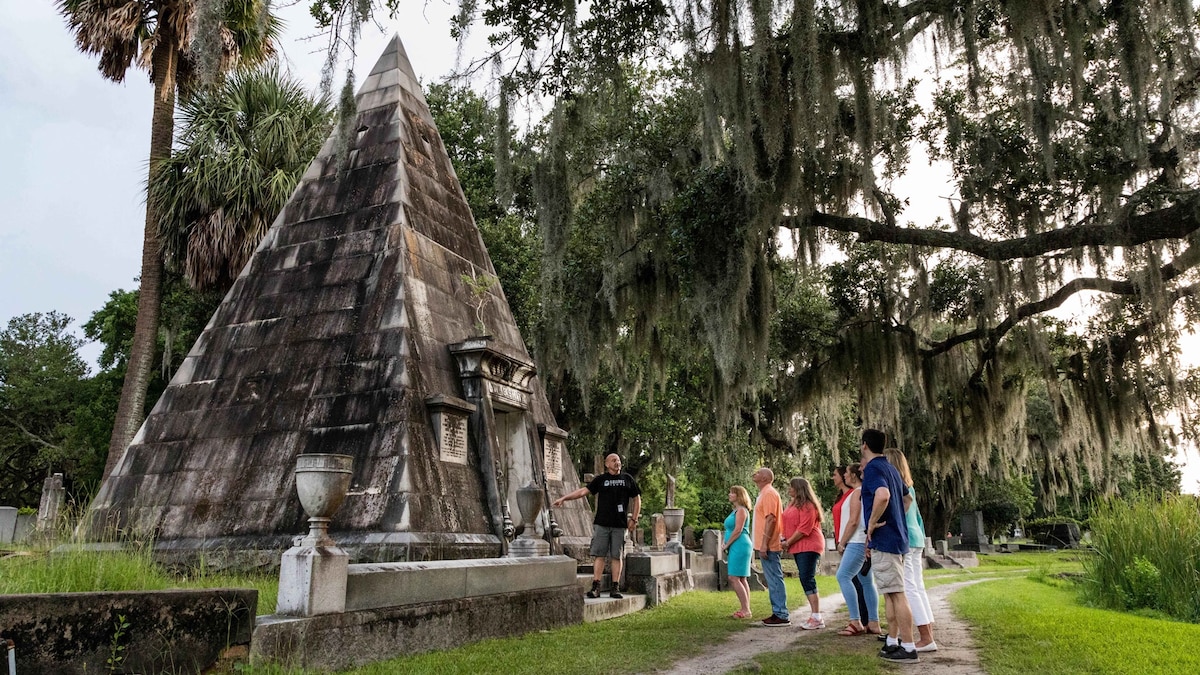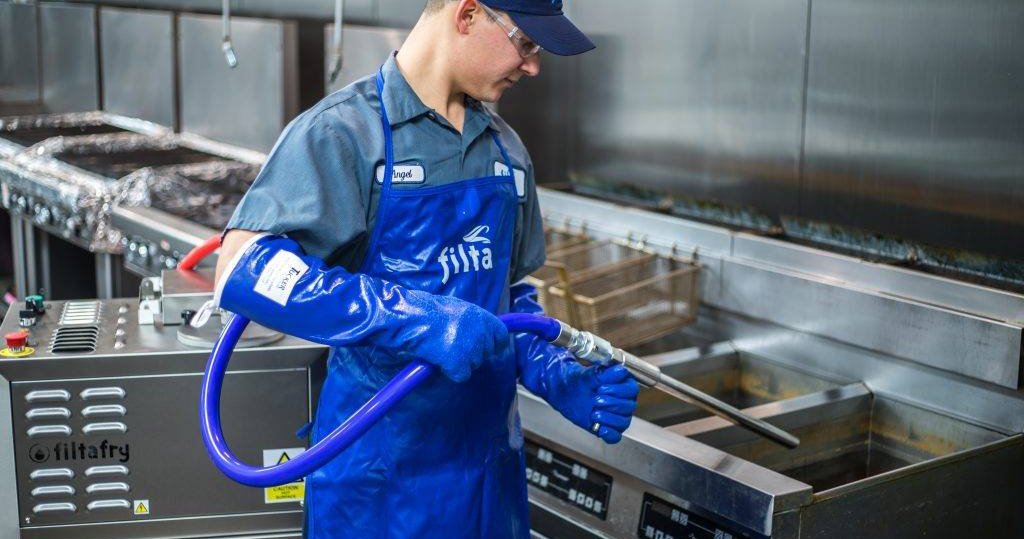
As a concierge at the famously haunted Battery Carriage House Inn (now 20 South Battery) in Charleston, S.C., guests frequently asked one question above all others: Had the staff ever seen a ghost?
In a city where spirits are as common as sweet tea, the answer was never simple. Such is life in the Lowcountry, where ghost stories run as deep as the tides. From pirate phantoms that haunt the Battery’s seawall to the candlelit wanderings of Confederate soldiers to the porch ceilings painted haint blue to fend off wicked spooks, Charleston’s spectral cast could fill an entire volume of haunted history. Those who know its bewitched alleys and shadowy piazzas understand the supernatural circuit like the back of a bony hand—and for travelers ready to chase chills down cobblestone streets, there’s more than you can literally say boo to.
1. 20 South Battery
Dr. Jack Schaeffer, current owner of the aforementioned 20 South Battery—a three-story mansion that doubles as his residence and a bed and breakfast—had his first brush with the paranormal while renovating the property’s carriage house.
“It was just after six, the light fading to dusk, when I heard it—‘Bam! Bam!’” Schaeffer recalls. Following the sound, he crept up to guestroom 8, but the space was empty, eerily still. When he phoned the inn’s longtime manager, her response made his skin prickle. “Did it sound like ‘Bam! Bam!’” she asked knowingly. When Schaeffer confirmed, she didn’t hesitate: “That’s the ghost of Room 8.”
Guests have dubbed the legless restless presence the Confederate Ghost, said to appear in a gray coat and notorious for his cantankerous outbursts. Schaeffer suspects the spirit lingers from the Civil War era, when nearby White Point Garden served as a defensive wall against attack.
The lost rebel isn’t the only otherworldly resident you might meet staying here for generations. Whispers have spread of a debonair phantom drifting through Room 10—seen only by women. It’s a detail that’s earned the figure his enduring nickname, the Gentleman Ghost. “He’s notorious for slipping beneath the covers with unsuspecting guests,” says Schaeffer. But the true identity of this lothario remains the mansion’s greatest mystery of all.
(10 of the best hotels in Charleston, from historic landmarks to hipster hotspots)
2. Dock Street Theatre
What we know today as the Dock Street Theatre has served various purposes since 1736—first as America’s premier playhouse, later as a hotel, then as a boarding house, and finally, as a theater once more. But through many incarnations, two ghostly characters have remained: half-history, half-folklore.
First, Junius Brutus Booth, the father of John Wilkes, the man who assassinated Abraham Lincoln. The elder Booth performed in Charleston at least 59 times between 1820 and 1860, according to Donald Newton, the theater’s operations manager. And Booth’s choice of accommodation was the Planter’s Hotel—later reborn as the Dock Street in 1937. On one visit, in a fit of drunken rage, he beat his manager with an fireplace poker, landing himself in “restraint,” according to a 1938 Charleston Courier. If you attend a show, you might catch Booth’s ghost, who, some say, still drifts into the balcony box, second from stage right.
Then there’s Nettie Dickerson. Once a church worker, she longed for the glamour of the Planter’s Hotel lobby. Donning a red dress and a feather, she turned to sex work, earning infamy and, eventually, heartbreak. Rejected by a John on a stormy night, she’s said to have cried from the hotel’s balcony, which visitors can still see today, before lightning struck her dead. Newton says a construction worker in 2010 reported seeing her spirit pacing the balcony in rags—visible only from the knees up after the 20th-century remodel raised the building, as if her ghost were stitched into the ironwork itself.
3. The Old Citadel
In Charleston, the surest way to keep a historic building alive is to give it new life. Take the 1829 fortress-like structure once known as “The Old Citadel.” First a state arsenal, then South Carolina’s military college, it was reborn as an Embassy Suites in 1996. Yet some guests whisper that one cadet never checked out.
For years, a half-head figure seen drifting through the mezzanine, a public space, has rattled housekeepers and holidaymakers alike. “The ghost that’s been seen is a young man missing everything above his eyebrows,” says historian and author Ed Macy. “It looks like he’s been shorn off—or a photograph that hasn’t fully downloaded.” Clad in a gray cadet’s uniform, he’s clearly a former student. As for how he lost his head—or why he still stalks the hotel’s halls—remains a puzzle. But Macy has his guesses. “We all know how bad the hazing at the school was back in the day,” says Macy. Maybe this poor cadet never lived to tell the tale.
4. Charleston Orphan House
The Holy City is home to another institution of higher learning with a ghostly past: the College of Charleston. Legend has it that orphans haunt Berry Residence Hall, where they once lived a century ago. Today, the six-story building houses approximately 640 students. However, before it became a dorm, the plot of land was the Charleston Orphan House—the oldest municipal orphan house in the United States, founded in 1790.
Macy says the trouble at the orphanage began during the 1918 Spanish flu. With disciplinarians overwhelmed and the wards full of fevered children, chaos took hold—and one day, a fire set on the playground spiraled out of control, killing four young girls. Ever since the dorm opened in 1991, “residents have reported hearing jacks or bottles spinning like children are playing,” says Macy. False fire alarms are also frequent. But walk by the property on St. Phillip Street and you might catch the most bone-chilling sound of all. “People often report hearing little girls’ voices chanting ‘Ring Around the Rosy.’”
(Go beyond Charleston’s King Street to explore the working-class neighborhood redefining southern cool.)
5. Poogan’s Porch
Poogan’s Porch has plenty to celebrate—2026 marks 50 years on Wentworth Street—and generations of diners have made the landmark restaurant part of their own stories. But for all the warmth, there’s also a chill. Zoe St. Amand, the house ghost, isn’t menacing so much as mischievous. Zoe, the former home’s owner, was a spinster who is said to have gone mad at the death of her sister.
“She seems to enjoy making herself known in subtle, but striking ways,” says Cameron O’Toole, the restaurant’s director of sales and marketing. She likes mirrors—the upstairs ladies’ room and the glass-front door are her favorite places—and she’s been known to photo-bomb guests. Facilities manager Allen swears the doors swing on their own when he’s working late, and more than one guest of the Mills House Hotel, which sits across the street, has reported seeing Zoe looking at them from the restaurant’s second-story window.
6. F.W. Wagener Building
At the corner of East Bay and Queen Streets looms an imposing Victorian warehouse with a dark backstory. The F.W. Wagener building, with its soaring three-story façade and elegant floor-to-ceiling windows, once served as headquarters for Charleston’s cotton barons. In the 1800s, the wealthy Poirier family leased it to broker their harvests, and for years, business boomed.
By the time heir George Poirier took over, though, he’d grown soft from privilege, untested by real work. His inexperience collided with the boll weevil blight, which devastated the crop. Desperate, George scraped together a final shipment and climbed to the third floor to watch it sail for England. But instead of fortune, he saw fire—flames licking up from the ship’s hold, carrying his last hope with them.
“The next day, a newspaper boy was found screaming in the middle of East Bay,” says former Charleston tour guide Lindsay Morris. “He spotted George’s shadow on the sidewalk, swinging from a noose.” And ever since, weird occurrences, like inexplicable cold drafts and eerie swinging shadows, have been the norm. Seven years vacant, the building could soon welcome an RH—formerly Restoration Hardware—bringing new life to what could be called the city’s first boo-tique.
7. The Mosquito Fleet
Charleston’s seafood has been a culinary calling card for generations, but you might not realize its story traces back to the Mosquito Fleet—Gullah watermen who risked life and limb to bring the day’s catch ashore first as enslaved people and then as freedmen up until the 1970s. In the early 20th century, the Mosquito Fleet swelled to over 100 men—made famous in Dubose Heyward’s Porgy, later adapted into the opera Porgy & Bess.
Tyler Page Wright Friedman, who runs the year-round Skeletons in the Closet tour with Walk and Talk Charleston, says the Mosquito Fleet’s story hasn’t fully slipped beneath the waves. “Obviously, they weren’t big boats,” Friedman says. Between 1893 and 1928, more than a dozen hurricanes lashed the Lowcountry, and when those tempests blew in, not every fisherman found his way home. To this day, sailors whisper of spotting phantom boats skimming the harbor waters—Charleston’s ghost fleet, still chasing the catch. Board a sunset cruise with the Palmetto Breeze Sailing Catamaran to see for yourself.
(Charleston’s newest museum reckons with the city’s role in the slave trade)
8. The Unitarian Church Graveyard
Could Charleston’s second-oldest cemetery have inspired Edgar Allan Poe’s haunting poem Annabel Lee? Some believe so. Hidden behind a wrought-iron gate at 4 Archdale Street—that’s open to the public daily and available for night tours through Tour Charleston—lies a graveyard dating back to 1772, where, legend has it, rests the remains—at least in part—of Anna Ravenel, said to be Poe’s doomed lover.



